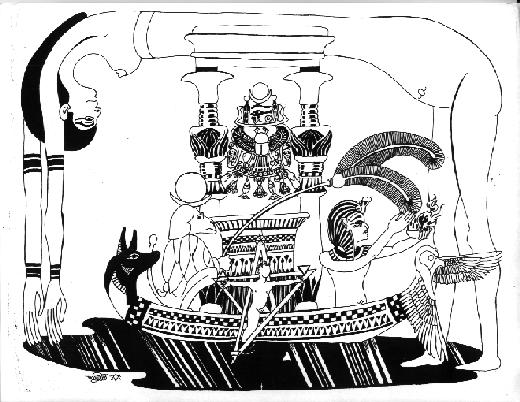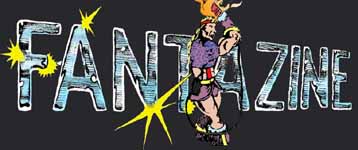

Time for another Christmas Card complete with explanation induced in accordance with the Gnostic sacrament. The theme for this year's card is Egyptian. The appreciation of universal truth requires the appreciation of several comparative views from a world of philosophies. Unfortunately it's unpopular to understand the religions of the world, however, the similarities, when studied, become undeniable. In fact at around the same era as Christ, the Greek religions that had spread throughout Asia were embracing a deity known as Dionysus. Although Dionysus is not among the major deities of Greek Mythos, his popularity came to rival the major deities. Dionysus was a child of Zeus or in other words, the son of god. The main similarity between Dionysus and the contemporary version which sprung from the Hebrews was that Dionysus was seated on the throne of Zeus and then killed. After his untimely death, Dionysus was risen from the dead. It would be naive to presume that the Greeks, who were evangelized by the early Christian church didn't often understand Jesus in the light of the Dionysus myth, which they were more familiar with at the time. As one digs deeper in the history of beliefs embraced by mankind, one can notice similarities in the Babylonian god Adonis, the Syrian Attis, the Sumerian goddess Innana, not to mention the immortally popular Osiris of the Egyptians. Although Osiris is not traditionally represented on this Card, his mother is. The Goddess of the Boundless, Infinite, Unknown Nothing who surrounds all that we know was known as Nuit to the Egyptians. She is shown on the card stooping over the scene in her traditional posture. She represents the infinite body of the skies. She defines the circumference of a temple scene where a boat, which represents the human body, flows upon the waters of the blood. The goddess, Nuit gave birth to the god Osiris, along with his wife-to-be, Isis, her sister Nephtese along with her husband, Set, as well as the elder version of Horus who was the grown child of Isis. This paradox reflects a mystery too elaborate to comment on. The style of this year's design shows the flavor of allegory typical of Egyptian mythos. In a sense, the whole story of Osiris, Isis, Set, Nephtese, and Horus comes from the womb of the infinite unknown into the realm of knowledge. Osiris was traditionally known as the first king of Egypt who taught the Egyptians agriculture and was mainly revered as a god of the corn. The Egyptian patterns upon the boat are intended to imply the spirit of the corn revered by the early Egyptians. This spirit of vegetation was later anthropomorphized into the human version of Osiris. As the story goes, Osiris is murdered by his brother Set. Set then chops Osiris up and scatters his pieces throughout Egypt like the farms Osiris left behind as his legacy. Consequently, his mourning wife, Isis goes out and gathers all the pieces of Osiris except his phallus. This is probably an allegory of her gathering the memories of her departed husband with the exception of his physical lifeblood that disappeared forever. The missing phallus also nicely represents the corn seed that supported Egyptian agriculture. Osiris is then put back together again to become the god of the Egyptian underworld and keeper of immortality. Like Dionysus and even Jesus, Osiris was a later god who went on to become the most popular in Egypt. This may have to do with the corn spirit who Osiris personified, offering a yearly demonstration of the resurrection in nature. In the same way that the corn died in winter and returned in spring, perhaps the ancient Egyptians assured themselves of a similar fate with the faith of Osiris. It was the religion of Osiris that initiated the Egyptian tradition of mummifying corpses for the sake of immortality. In the process of preparing the mummy, certain organs were removed from the body and put into jars which were made in the images of an ape, a human, a bird (probably a falcon or hawk), and a dog. First the lungs were put in a vesicle which resembled an ape. For this reason the card shows the Egyptian ape-god Hermanubus performing the function of the lungs by fanning air upon the flame of life. This ape carries the symbol of the sun upon his head implying the inner sun or soul of the body carried on this boat. The flame of life is carried in the hand of a man representing the jar where the heart is placed. The man on the boat performs the function of the heart by dipping his other hand into the blood where the boat floats and pouring it upon the flame thus providing the fuel for the flame of life to continue burning. Next to the man is an ornament on the bow of the boat in the form of a bird representing the jar which held the mummy's intestines. The intestines are where the food broken down by the stomach is absorbed into the blood which the boat floats upon. At the stern of the boat is an ornament of the Egyptian dog faced god Annubis who symbolizes, for the sake of this card, the jar which the ancient embalmers placed the mummy's stomach into. In front of the dog, patterns of Egyptian style, design the side of the boat like corn kernels flowing into the intestines to be absorbed into the blood where the life of the body flows. Also upon this card is an alter symbolizing the innermost part of the temple scene which the card diagrams. Upon this alter is the rendering of an Egyptian piece of jewelry similar to one found in the tomb of king Tut. On this jewelry is a beetle which, according to Egyptian myth, carries the Sun beneath the Earth at night. This symbolizes for the card's sake the nucleus of bodily cells where the souls of mankind sit upon thrones of DNA. The symbols upon this card function similar to the hieroglyphics that the Egyptians wrote with. With a symbol, one was able to process many related ideals into a single symbol that could also be identified with a word to form written sentences with. In a similar way the collective symbols that make up this Christmas card are summarized by the alchemical symbol of spirit. This is suspended over the card's Nativity child upon a pentagram where the elements are arranged according to western esoteric science. According to esoteric science, the symbol of spirit belongs on the point above (when pentagrams are dignified). Spirit is sympathetic to earth and fire since they represent the elemental extremes which the element of spirit encompasses physically in the form of earth and in the more subtle fiery form of true will. Consequently, spirit is not directly sympathetic to the elements adjacent to it since they represent esoterically thought (air) and the emotions (water) which must both be overcome to attain the higher sense of spirit. In the same way the other elements are arranged on the pentagram according to their elemental sympathies which they connect with and the elements unsympathetic to them that are adjacent. For instance air can be found in the element water (H2O) and the element fire which can not burn without air. However earth contradicts the nature of air, which is space or the area that can only surround the element earth and not combine with it. Similarly water can only combine with air (steam) and earth (ice), yet can only cancel out fire or be cancelled out by fire's evaporative power over water. And so the arrangement of the elements upon the pentagram becomes justified. In western esoteric thought, the method for drawing an invoking pentagram is basically understood to begin with the point of spirit and then draw the line connecting with earth and so on to water, air, fire, and then back to the point of spirit respectively. In this way the fuel of our souls is taken beneath the Earth by the mythological beetle when the child takes in the element of earth by eating. From there the stomach breaks down the element earth into liquid also symbolized on the card by the child's leg of earth being dipped into the blood/water. When the element earth is transformed into water or blood it then becomes saturated by air in the lungs. When the blood is thus transformed by air it becomes the fuel for the soul and arrives at the heart which ignites the blood with the fire of motion or activity. With the flow ignited by the heart, the blood then goes on to take the life of spirit to nourish every cell in the body. And so the pentagram appropriately illustrates, for the benefit of mind, the process of the body taking in the gross element of earth and then transmuting consecutively, the earth into more and more subtle elements until earth becomes fire and dissolves into the concept of spirit. If the Egyptians were to understand the body in the same way modern scientists have defined it and its functions, perhaps they would have devised a word in their Hieroglyphic language for "body cell" that would look something like this ...

 Check out other graphic novels at Fantazine HOME
Check out other graphic novels at Fantazine HOME